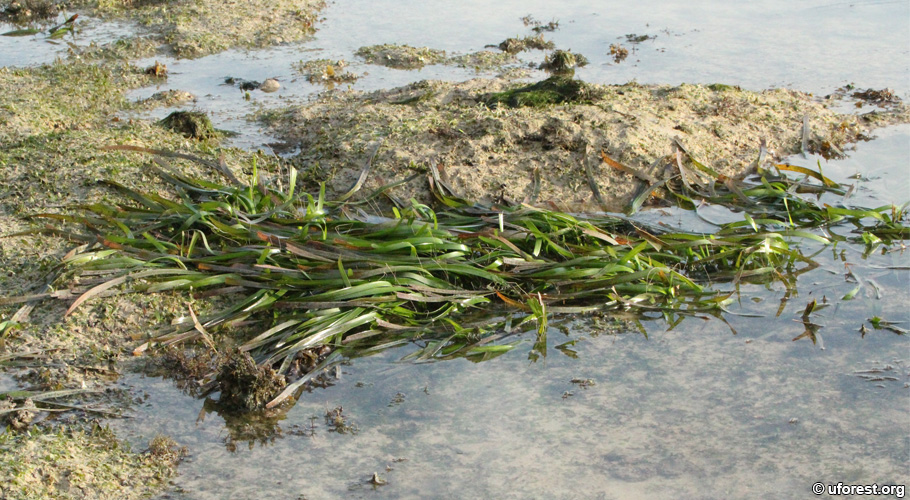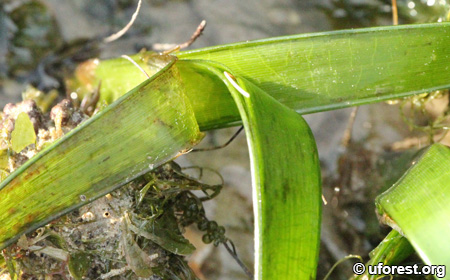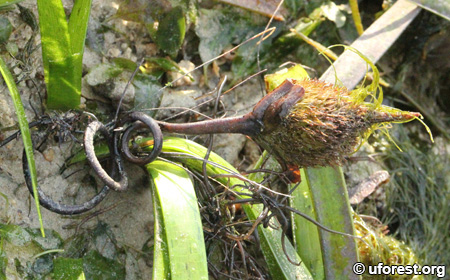Enhalus acoroides (L.f.) Royle
| Etymology | Genus | Unknown |
|---|---|---|
| Species | Resembling plants in the Acorus genus | |
| Family | Hydrocharitaceae | |
| Synonyms | Enhalus koenigii Rich., Stratiotes acoroides L.f. | |
| Common Names | Tape Seagrass, Eel Grass | |
| Status | Native: Critically Endangered | |
| Form | Herb | |
| Native Distribution | Japan, Taiwan, Malesia, Papua New Guinea, Pacific Islands, Australia, India, East Coast of Africa | |
Diagnostics:
Enhalus acoroides is the longest seagrass found at our shores, with blades extending from 30cm to 1.5m long (Tan, 2016). The margins of the blades have inroll margins and the rhizomes are covered with fibrous black hairs.
Interesting Facts:
The Tape Seagrass can occur as thick extensive meadows or sparse clumps at the shores. The tiny male flowers are released from the plant during the low spring tide and float on water, then get attracted to the female flowers through the hydrophobic properties of the female's petals. When the tide rises, the female flowers close their petals thereby trapping the male flowers within, resulting in pollination (Umi Kalsom, 2016).
According to Umi Kalsom (2016), the fibres from the leaves are used for making ropes (Irian Jaya, Indonesia) and fishing nets (Yap, Pacific Islands). It is also said to be an important source of food for Dugongs (Ria, 2016)

Small patch of Tape Seagrass at Sentosa's shores during low tide.

Multiple blades from a point. Note the inroll margins.

Ends of the seagrass torn or bitten off.

Fruit, with a spring like stalk.
References
Umi Kalsom Y (2016) Enhalus acoroides (PROSEA). Plant Resources of South East Asia. https://uses.plantnet-project.org/en/Category:PROSEA. Accessed on 30-Nov-2018.
Tan R (2016) Tape seagrass Enhalus acoroides. http://www.wildsingapore.com/wildfacts/. Accessed on 30-Nov-2018.
Author: Siyang
Posted: 2018-12-02 / Modified: 2025-10-30